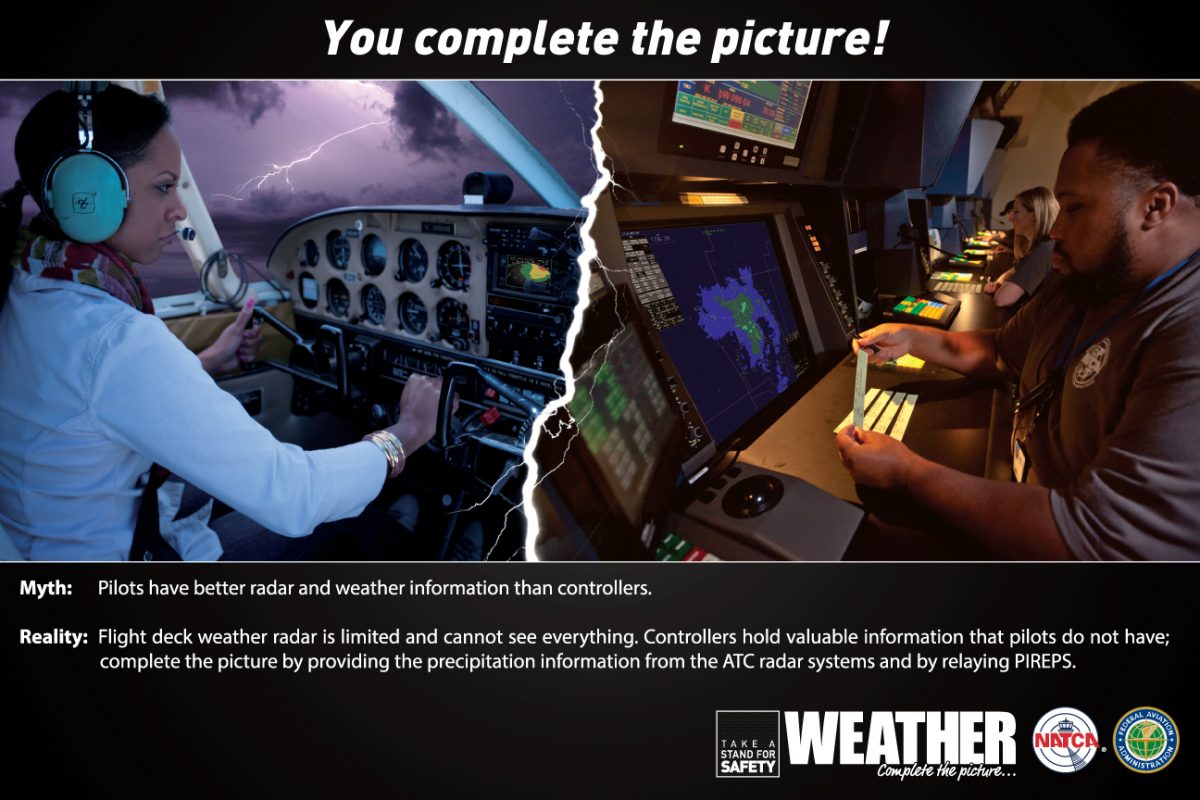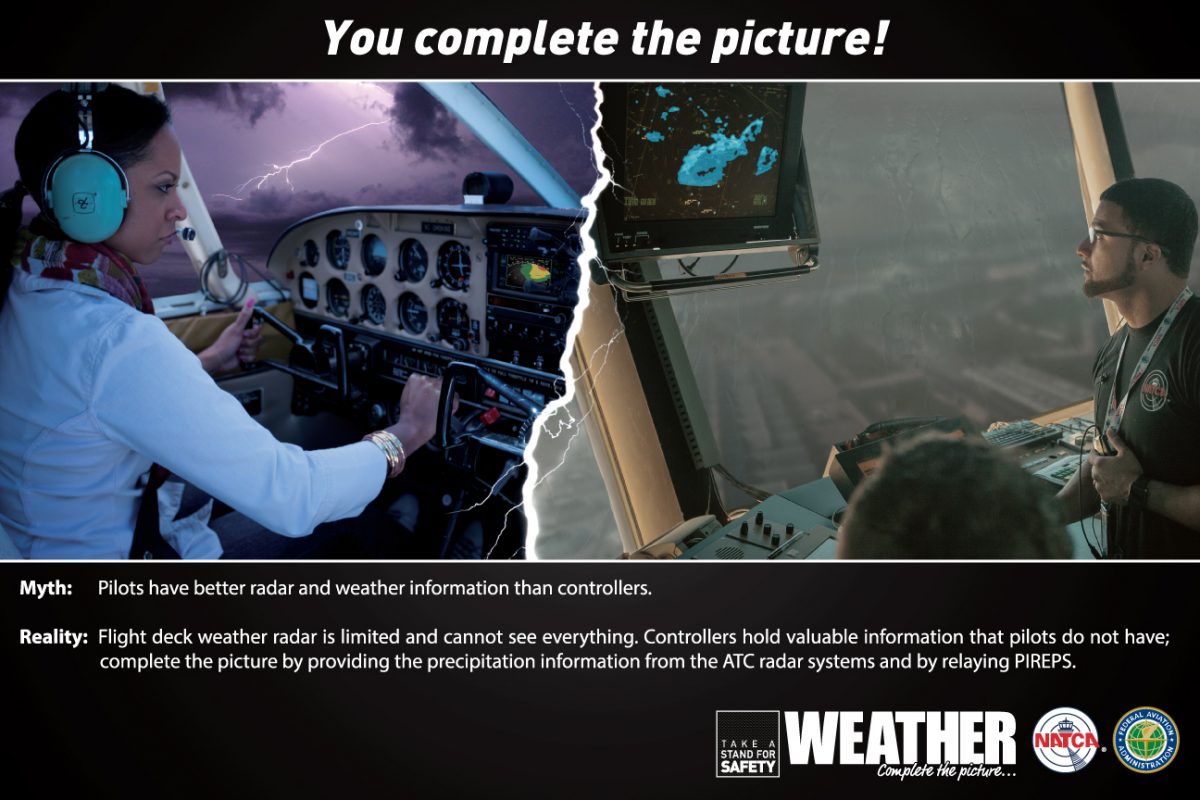
Take A Stand For Safety
Weather – Complete The Picture




Weather awareness saves lives. A pilot’s equipment alone cannot see the full weather picture. It takes controllers and pilots to complete the picture. Together, the FAA and NATCA are addressing safety myths, encouraging controllers to issue weather early and often, solicit PIREPs, and save lives on a daily basis.
Downloadable Tools and Resources
Looking to spread the word about Weather – Complete the Picture? Find materials here that you can download and print at your facility.


Downloadable Posters:
Tasfs Weather Poster for Print (2 pages)(PDF)
Learn More About Weather
Forecasting the Frightful Winter Weather
Winter poses unique weather challenges for pilots, and NATCA and the Federal Aviation Administration are working with the aviation community to increase everyone’s awareness of those challenges. One way they are doing that is emphasizing the importance of pilot weather reports, or PIREPs.
ATO COO Weekly Update – Communicating For Safety (CFS) (PDF)
ATO COO Teri Bristol reinforces the need for a proactive, collaborative safety approach at NATCA’s annual Communicating For Safety conference.
Videos
| Winter Weather 2017 | Weather Myths | CFS 2016 Panel: Aviation Weather | Weather – Complete the Picture | Weather Events Stories | Weather – What Controllers See | Weather Campaign: A Pilot’s Perspective |
| Winter weather changes fast, can be difficult to track, and it can be life-threatening. |
Pilot Mike Schilz debunks several myths about weather information and dissemination between the cockpit and the control facility. |
Listen to NATCA, FAA, and industry experts discuss safety challenges before, during, and after flight. | Stories Of NATCA Archie League Medal of Safety Award-Winning Events Involving Weather | Stories Told From The Controller’s Perspective | What Controllers See vs. What Pilots See | A Pilot’s Perspective on Dealing with Weather Challenges with ATC. |
IFR/VFR
 Close proximity Instrument Flight Rule/Visual Flight Rule (IFR/VFR) events are occurring in all air traffic environments. Together, the FAA and NATCA are addressing myths and encouraging controllers to call traffic, issue safety alerts, and work with pilots to avoid IFR/VFR conflicts.
Close proximity Instrument Flight Rule/Visual Flight Rule (IFR/VFR) events are occurring in all air traffic environments. Together, the FAA and NATCA are addressing myths and encouraging controllers to call traffic, issue safety alerts, and work with pilots to avoid IFR/VFR conflicts.
7110.65 2-1-1: The primary purpose of the ATC system is to prevent a collision between aircraft operating in the system.
7110.65 2-1-2: Give first priority to separating aircraft and issuing safety alerts as required in this order. Good judgment must be used in prioritizing all other provisions of this order based on the requirements of the situation at hand.
Click here to view the IFR/VFR Infographic for more information.
Please click here to read a message from FAA ATO Chief Operating Officer Teri Bristol.
Videos
| IFR/VFR Myths: The Debunkers | IFR/VFR National Focus |
| There are some misunderstandings and myths in the field, such as see-and-avoid meaning “they can just separate themselves.” Find out the truths that bust the myths. |
Working together, we can take a stand for safety. |
Latest News:
March 10, 2017: “Thanks For The Help, Saved My Life”
A pilot’s grateful words after a recent close call in Fort Worth Center’s (ZFW) airspace illustrate the importance of air traffic controllers intervening when conflicts arise between aircraft operating under instrument and visual flight rules. Read more.
In January, the FAA and NATCA kicked off the second phase of the Take a Stand for Safety campaign, addressing myths around instrument flight rule/visual flight rule operations and encouraging controllers to call traffic, issue safety alerts, and work with pilots to avoid conflicts. “We’re focusing on IFR/VFR conflicts because there are misunderstandings about what you can and can’t do, and we want to make sure they are debunked,” explained Steve Hansen, chairman of the National Safety Committee for NATCA. Please click here to read more.

